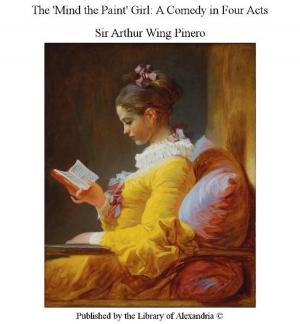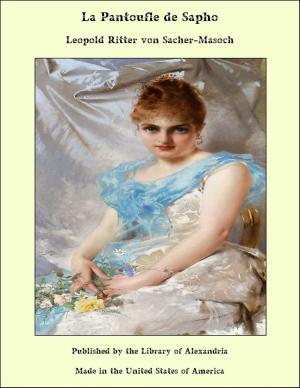The Drawings of Leonardo da Vinci
Nonfiction, Religion & Spirituality, New Age, History, Fiction & Literature| Author: | Leonardo da Vinci | ISBN: | 9781465619327 |
| Publisher: | Library of Alexandria | Publication: | March 8, 2015 |
| Imprint: | Language: | English |
| Author: | Leonardo da Vinci |
| ISBN: | 9781465619327 |
| Publisher: | Library of Alexandria |
| Publication: | March 8, 2015 |
| Imprint: | |
| Language: | English |
Leonardo da Vinci found in drawing the readiest and most stimulating way of self-expression. The use of pen and crayon came to him as naturally as the monologue to an eager and egoistic talker. The outline designs in his "Treatise on Painting" aid and amplify the text with a force that is almost unknown in modern illustrated books. Open the pages at random. Here is a sketch showing "the greatest twist which a man can make in turning to look at himself behind." The accompanying text is hardly needed. The drawing supplies all that Leonardo wished to convey. Unlike Velasquez, whose authentic drawings are almost negligible, pen, pencil, silver-point, or chalk were rarely absent from Leonardo's hand, and although, in face of the Monna Lisa and The Virgin of the Rocks and the St. Anne, it is an exaggeration to say that he would have been quite as highly esteemed had none of his work except the drawings been preserved, it is in the drawings that we realise the extent of "that continent called Leonardo." The inward-smiling women of the pictures, that have given Leonardo as painter a place apart in the painting hierarchy, appear again and again in the drawings. And in the domain of sculpture, where Leonardo also triumphed, although nothing modelled by his hand now remains, we read in Vasari of certain "heads of women smiling." "His spirit was never at rest," says Antonio Billi, his earliest biographer, "his mind was ever devising new things." The restlessness of that profound and soaring mind is nowhere so evident as in the drawings and in the sketches that illustrate the manuscripts. Nature, in lavishing so many gifts upon him, perhaps withheld concentration, although it might be argued that, like the bee, he did not leave a flower until all the honey or nourishment he needed was withdrawn. He begins a drawing on a sheet of paper, his imagination darts and leaps, and the paper is soon covered with various designs. Upon the margins of his manuscripts he jotted down pictorial ideas. Between the clauses of the "Codex Atlanticus" we find an early sketch for his lost picture of Leda.
Leonardo da Vinci found in drawing the readiest and most stimulating way of self-expression. The use of pen and crayon came to him as naturally as the monologue to an eager and egoistic talker. The outline designs in his "Treatise on Painting" aid and amplify the text with a force that is almost unknown in modern illustrated books. Open the pages at random. Here is a sketch showing "the greatest twist which a man can make in turning to look at himself behind." The accompanying text is hardly needed. The drawing supplies all that Leonardo wished to convey. Unlike Velasquez, whose authentic drawings are almost negligible, pen, pencil, silver-point, or chalk were rarely absent from Leonardo's hand, and although, in face of the Monna Lisa and The Virgin of the Rocks and the St. Anne, it is an exaggeration to say that he would have been quite as highly esteemed had none of his work except the drawings been preserved, it is in the drawings that we realise the extent of "that continent called Leonardo." The inward-smiling women of the pictures, that have given Leonardo as painter a place apart in the painting hierarchy, appear again and again in the drawings. And in the domain of sculpture, where Leonardo also triumphed, although nothing modelled by his hand now remains, we read in Vasari of certain "heads of women smiling." "His spirit was never at rest," says Antonio Billi, his earliest biographer, "his mind was ever devising new things." The restlessness of that profound and soaring mind is nowhere so evident as in the drawings and in the sketches that illustrate the manuscripts. Nature, in lavishing so many gifts upon him, perhaps withheld concentration, although it might be argued that, like the bee, he did not leave a flower until all the honey or nourishment he needed was withdrawn. He begins a drawing on a sheet of paper, his imagination darts and leaps, and the paper is soon covered with various designs. Upon the margins of his manuscripts he jotted down pictorial ideas. Between the clauses of the "Codex Atlanticus" we find an early sketch for his lost picture of Leda.















